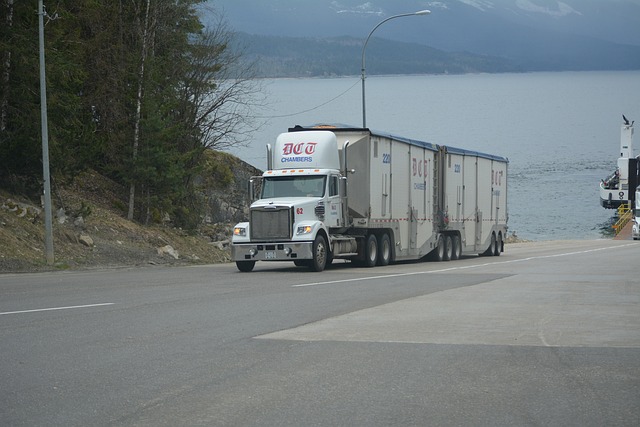Advanced coverage features are transforming fleet security by providing comprehensive protection against various risks beyond traditional physical damage insurance. These features include liability protection, safe driving incentives, and regular maintenance, enhancing fleet safety and efficiency. Physical Damage Insurance is crucial for maintaining operational efficiency by covering repair and replacement costs. Strategic practices like risk assessment, data-driven policy adjustments, and advanced technologies like GPS tracking and telematics further strengthen fleet security. Case studies from diverse sectors highlight the significant advantages of robust security measures, demonstrating reduced claims, stolen vehicle recovery, and minimized insurance losses.
In today’s digital era, fleet security is paramount. This article explores how advanced coverage features, including robust Physical Damage Insurance, can transform fleet management. We’ll delve into strategies for maximizing benefits, from risk mitigation to cost savings, while showcasing real-world case studies. Learn how these innovative solutions not only protect assets but also enhance operational efficiency and peace of mind. Discover the game-changing impact on your fleet’s security today.
Understanding Advanced Coverage Features for Fleet Security

Advanced coverage features are transforming fleet security by offering comprehensive protection against various risks. These features go beyond traditional physical damage insurance, encompassing a wide range of perils that can impact a fleet’s operations. From natural disasters to theft and vandalism, specialized coverages ensure that fleet owners are not left vulnerable. Understanding these advanced options is crucial for maximizing the benefits and mitigating potential losses.
By delving into the intricacies of these features, fleet managers can make informed decisions. They can tailor their insurance policies to suit specific needs, ensuring optimal protection for their assets. Advanced coverage often includes liability protection, which shields against legal repercussions arising from accidents or damage caused to third parties. Additionally, it may offer incentives for safe driving practices and regular vehicle maintenance, ultimately enhancing overall fleet safety and efficiency.
The Role of Physical Damage Insurance in Fleet Management

In fleet management, Physical Damage Insurance plays a pivotal role in safeguarding against unforeseen events that can lead to significant vehicle damage. This type of coverage is essential for fleet owners as it provides financial protection against physical harm caused by accidents, natural disasters, or other mishaps. By including physical damage insurance in their risk management strategies, fleet managers can ensure their vehicles remain in optimal condition, minimizing downtime and the associated costs.
This insurance goes beyond basic liability coverage, offering comprehensive protection for the physical integrity of fleet vehicles. It helps cover repair or replacement expenses, ensuring that the fleet remains operational and efficient. With advanced coverage features, fleet security is enhanced, allowing businesses to focus on their core operations while mitigating potential financial losses from physical damage incidents.
Maximizing Benefits: Strategies and Best Practices

To maximize the benefits of advanced coverage features for fleet security, it’s crucial to implement strategic practices that go beyond basic physical damage insurance. One key approach is to integrate comprehensive risk assessment tools that analyze driving patterns, vehicle usage, and driver behavior. By identifying high-risk areas or drivers, companies can tailor their coverage to address specific vulnerabilities, ensuring optimal protection. Regular reviews of fleet data and adjustments to policies based on these insights can significantly enhance security and mitigate potential losses.
Additionally, leveraging advanced technologies like GPS tracking, telematics, and driver monitoring systems is essential. These tools not only provide real-time location updates but also offer valuable data on driver performance, speeding incidents, and unexpected stops. Proactive monitoring enables fleet managers to take immediate action in case of emergencies, respond swiftly to security breaches, and even predict potential risks. Such proactive measures, combined with robust physical damage insurance, can transform fleet security into a dynamic, data-driven process that keeps one step ahead of emerging threats.
Case Studies: Success Stories of Enhanced Fleet Security

In today’s digital era, advanced coverage features have become a game-changer for fleet security. Case studies from various industries offer compelling success stories that highlight the benefits of implementing robust security measures. For instance, a leading logistics company experienced a significant reduction in physical damage insurance claims after deploying real-time tracking and predictive analytics. This technology enabled them to proactively identify high-risk areas and driver behaviors, leading to improved safety protocols and cost savings.
Another notable example is a ride-sharing service that encountered a surge in vehicle thefts. By integrating advanced telematics and GPS monitoring, they successfully recovered stolen vehicles and minimized insurance losses. These success stories underscore the importance of leveraging technology to enhance fleet security, ultimately ensuring safer operations and financial protection for businesses.
By leveraging advanced coverage features, fleet managers can significantly enhance security and minimize risks. Implementing strategies such as comprehensive insurance plans, including physical damage insurance, and adopting best practices like regular asset audits and driver training, proves essential in today’s dynamic landscape. As these case studies demonstrate, a proactive approach to fleet security not only mitigates losses but also fosters a culture of safety and efficiency, ultimately contributing to the success and sustainability of any fleet operation.
